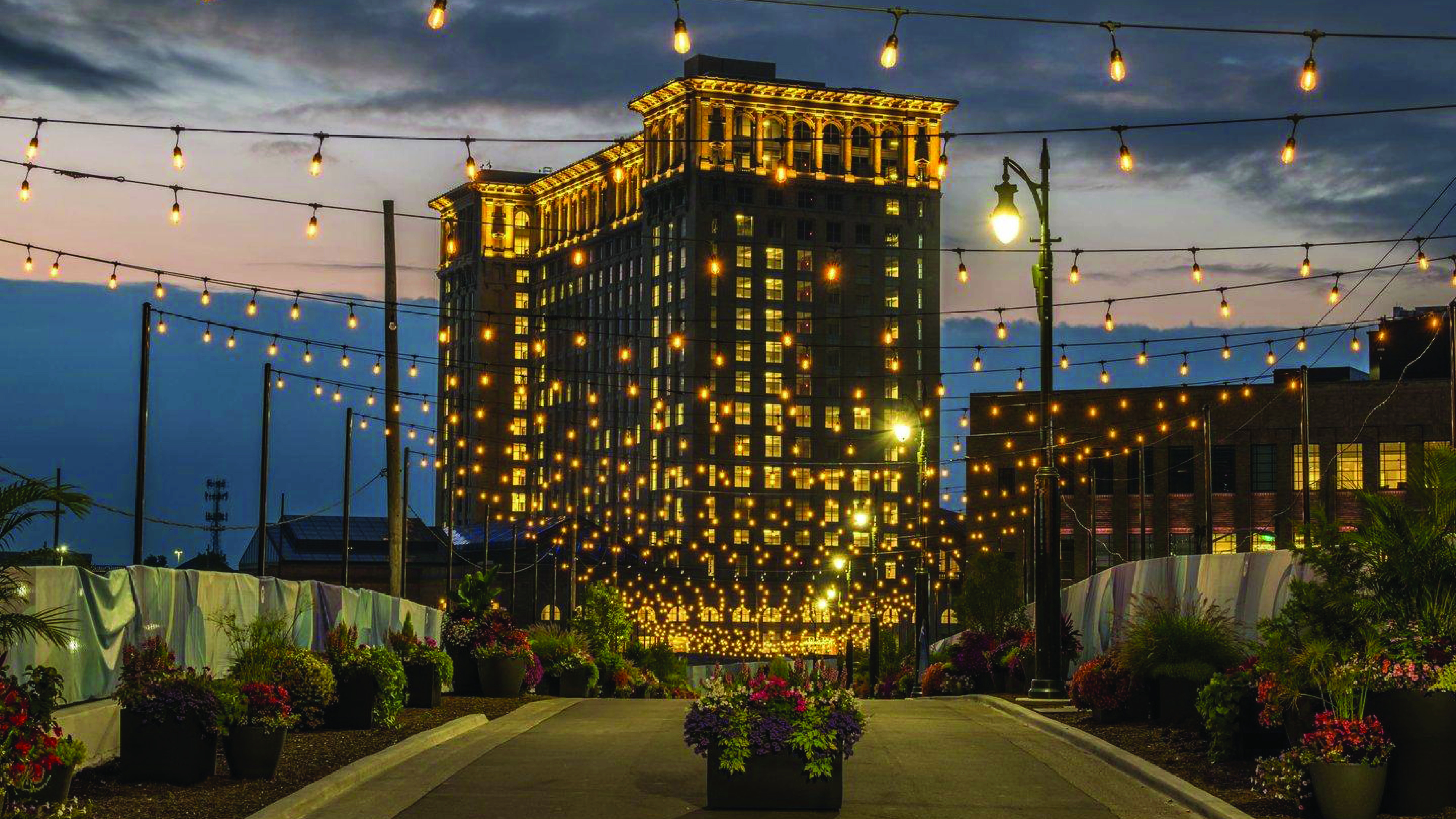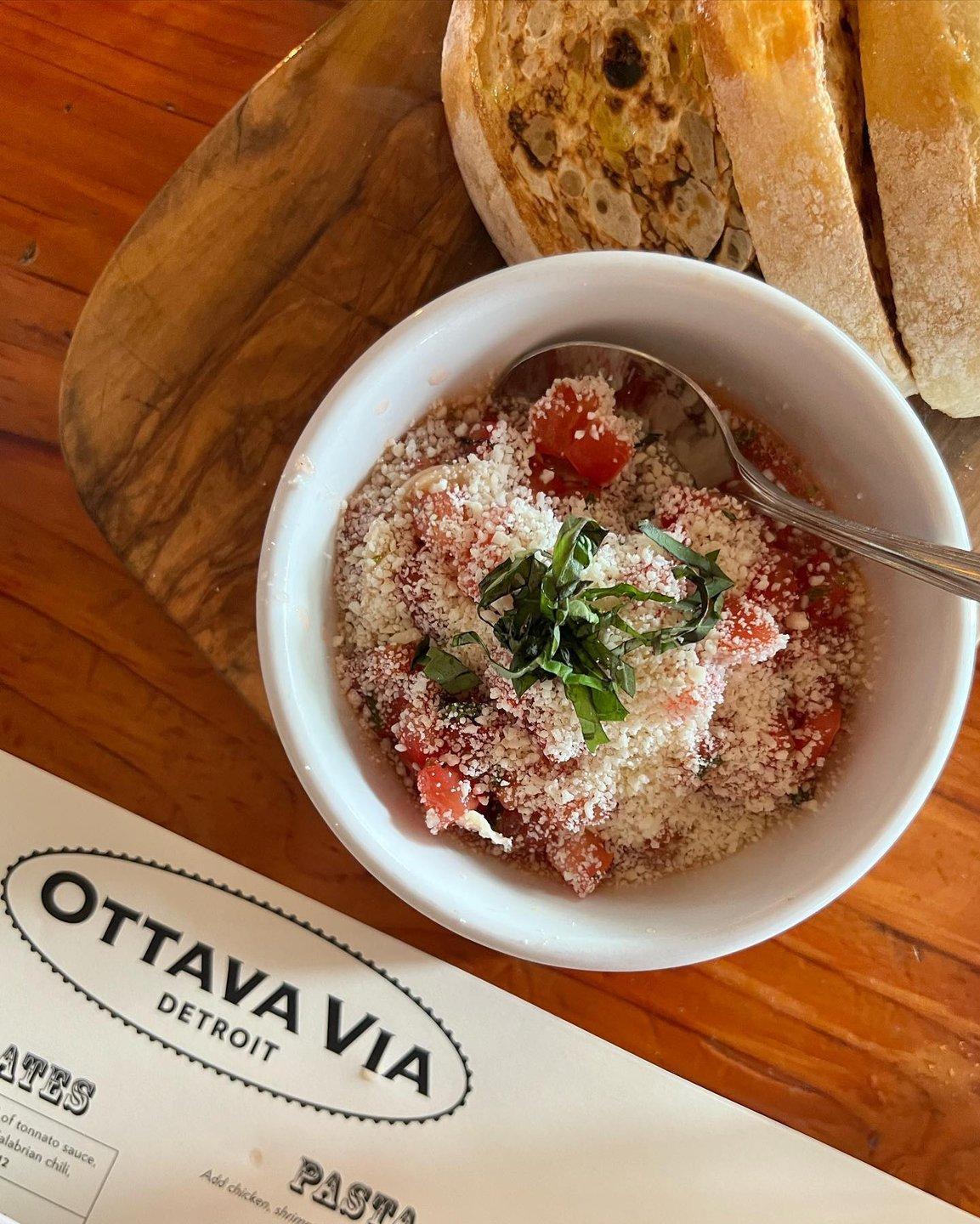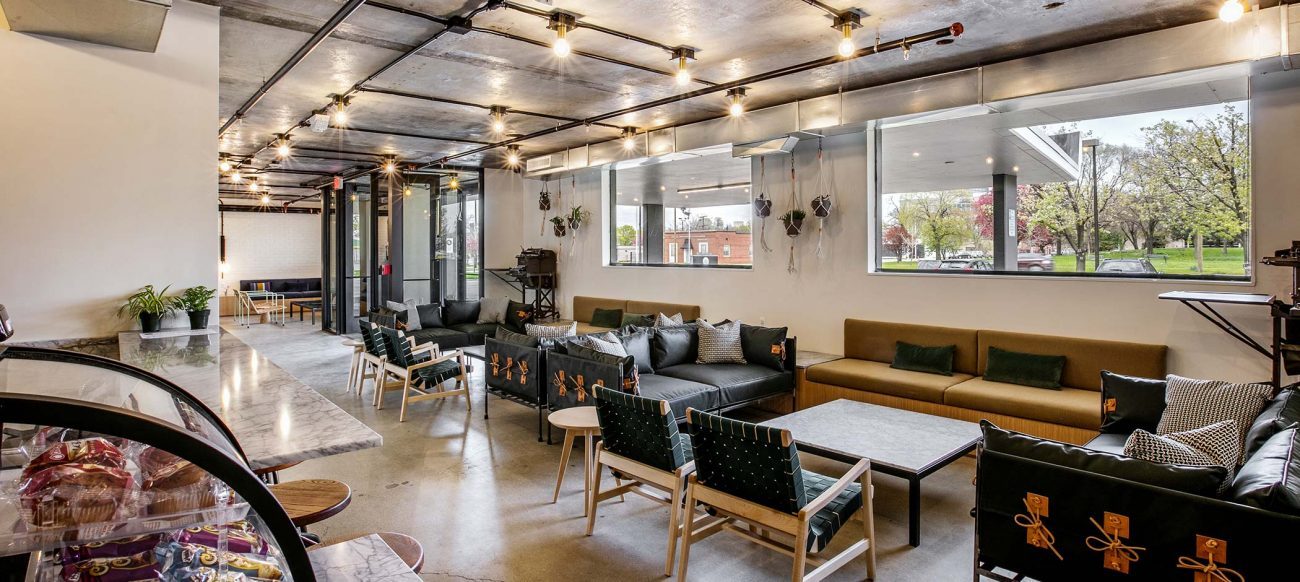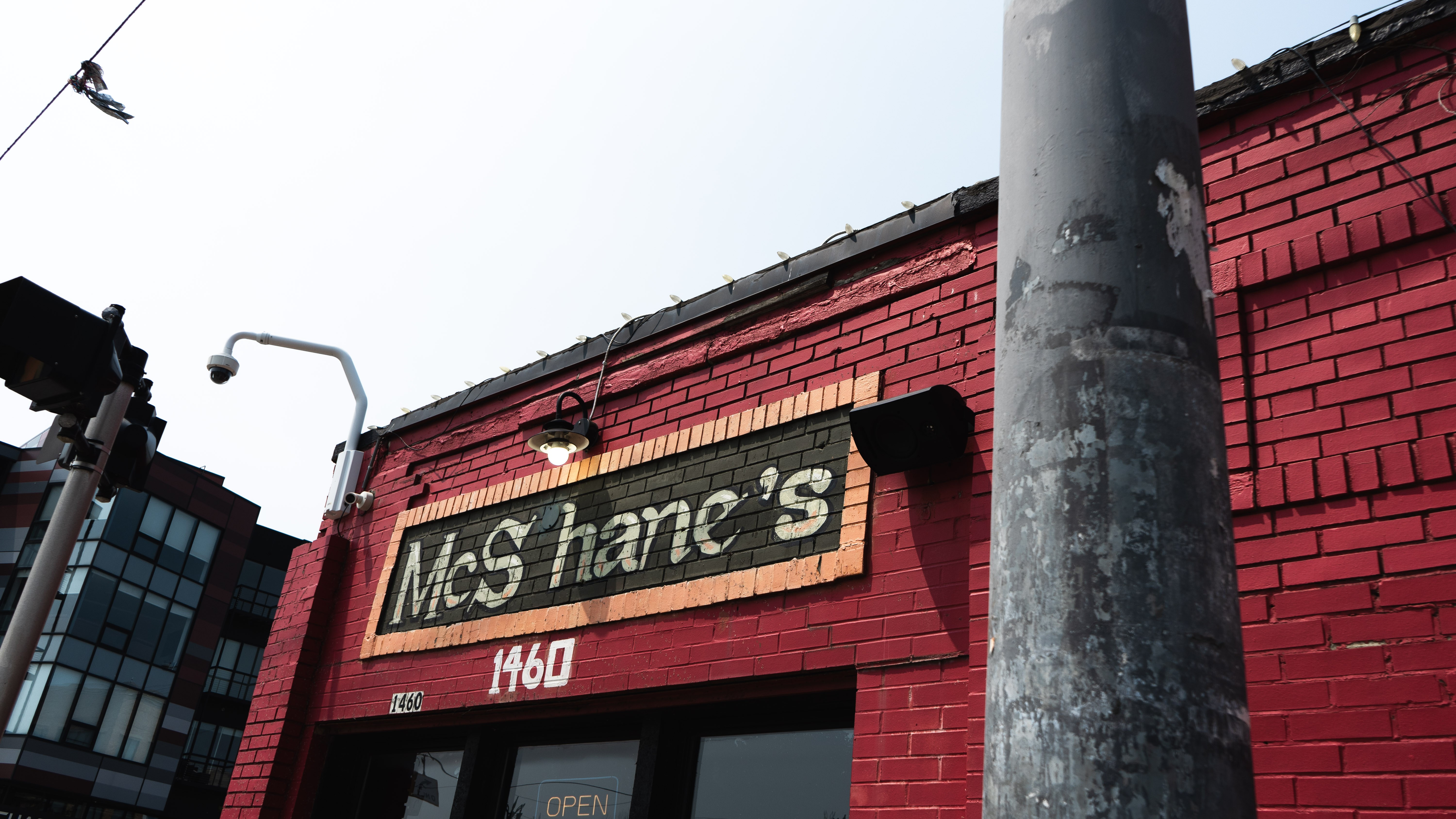Detroit’s Corktown Fuses Old World Grit with New Hustle
Story By: Danielle Alexander, Photos By: Michelle & Chris Gerard, Jason Vaughn, Lady of the House
Corktown is one just of several neighborhoods in downtown Detroit.
But, those who have ever lived, worked or visited this historic district would agree that it always had – and still continues to have – an identity of its own.

History of Corktown Detroit
Although Corktown is only half as old as the city of Detroit, it is Detroit’s oldest existing neighborhood. When the Erie Canal opened in 1825, New York was linked to Lake Erie and all of the Great Lakes. Immigrants began settling in Detroit in significant numbers.
To escape the Great Irish Potato Famine in the 1840s, Irish immigrants specifically began moving to the westside of downtown Detroit, now known as Corktown, which is said to be named after County Cork, Ireland. In fact, according to the Detroit Historical Society, “by the early 1850s, half of the residents of the 8th Ward (which contained Corktown) were of Irish descent.”
Though, by the beginning of the 20th century, the growing affluent Irish population began scattering throughout the city and surrounding areas, and Corktown, Detroit became home to other ethnic communities such as Maltese and Latino populations, many of whom were seeking auto industry jobs.
“My father always had the desire to come to America,” former Corktown resident Mary (Muscat) Motowski said while discussing her father’s choice to immigrate here from Malta. “At that time, in order for someone to come here, you needed to have a sponsor and job lined up.”
In May of 1951, Motowski’s parents were ready to pack up their three children for the 15-day journey across the Atlantic Ocean to New York. They then settled in Corktown because her father’s aunt and uncle lived in a duplex on Leverette and had space for them.
“At that time, if someone had a friend or relative coming to Detroit, they may have stayed with them until they could move out on their own,” Motowski said. “I remember my parents had a couple of roomers when we were young.”
Margaret (Zampa) Laybourn, another Maltese immigrant and former Detroit resident, had friends and a boyfriend who lived in Corktown. She said that so many immigrants congregated there as a way to “ease” into a new environment.
“They all stuck together at the time,” Laybourn explained. “They could speak Maltese with one another, and there were even a couple of grocery stores owned by Maltese people.”
Motowski agreed, “Since my father worked long hours, my mom and other tenants would come out on the porches and socialize. There were a lot of kids around while growing up, and we always spent time outdoors, playing and having fun. Good memories.”
Both Motowski and Laybourn said that many of the immigrant children attended school at one of Corktown’s Catholic churches, such as St. Vincent, St. Boniface or Most Holy Trinity (the oldest English-speaking Catholic parish in Detroit), which makes sense given the community’s historic Catholic roots that still remain such a major part of the neighborhood to this day.
After World War II, “city planners proposed demolishing large swaths of the neighborhood for factories,” eventually resulting in 75 acres of Corktown homes and businesses demolished, as well as hundreds of residents displaced, according to the Detroit Historical Society. That, plus “urban renewal, construction of the Lodge Freeway and business district encroachment” led to the neighborhood’s suffering.
In July of 1978, the remaining residential section of Corktown became part of the National Register of Historic Places, but it was not until the early 2000s when this Detroit neighborhood had its comeback.

The New Corktown
Corktown has not only become a popular destination to visit and dine, but a neighborhood more and more Detroiters are proud to call home again.
“I wanted to live somewhere a little less hectic and more quiet,” Jim McGovern said about his decision to move out of Midtown and into Corktown. “I still wanted to be somewhere with good restaurants and shops nearby. Corktown was the perfect match.”
Describing Michigan Avenue, McGovern referred to it as the “vibrant center of Corktown today,” and he is right. On this street alone, there are several restaurants and bars in Corktown, including Slows Bar BQ, Astro Coffee, Mercury Burger & Bar, LJ’s Lounge, Ottava Via, PJ’s Lager House, Two James Spirits, Takoi, and more on the way, plus a variety of shopping options.
“The street has a historical feel to it with its cobblestone surface,” McGovern said. “Mixed with the old are tons of great new shops and restaurants. Away from the avenue, the neighborhoods are residential and quiet with people old and new. It’s a nice place to live with a lot to offer.”
Lady of the House on the corner of Bagley and Trumbull is currently one of the most popular restaurants in Corktown. Chef Kate Williams’ great grandparents met at the Gaelic League on Michigan Avenue, and the 63-seat restaurant is near a few Detroit urban farms where it sources its products.
Lady of the House prides itself on its modern American food and beverage menus. They demonstrate a passion for knowledge and technique, with special emphasis on freshness and creativity, also reflecting strong commitment to community sourcing and support of Michigan farms.
“The food is amazing and really original, like Irish-inspired but gourmet,” Huntington Woods resident Kelsie Rodriguez said. “My favorites were the shaved ham (which sounds so bland but it’s buttery and delicious), and for dessert, the potato doughnuts. They give you little cups of tea and crackers when you arrive, and the atmosphere is really cozy and cute.”
Javon David of Birmingham agreed: “It’s a great place. Everything from the food to the tablescape to the service. The dishes are unique and very flavorful. It’s really a one-of-a-kind restaurant.”
Trumbull & Porter, marketed as Detroit’s “Authentic Hotel and First Artisan Boutique Property,” has also become a popular hangout spot for tourists and locals alike. Similar to Lady of the House and so many other Corktown businesses, this boutique hotel in Detroit embodies the spirit of the city through local sourcing, showcasing art from 50 Detroit and Michigan artists. Its 13-million dollar renovation also featured all Detroit and Michigan-based designers, architects and products.

Trumbull & Porter by Michelle & Chris Gerard
“It’s a remarkable property,” Director of Sales and Marketing Gail Major said. “I’m so blessed to have been asked to join this team and be part of such an up-and-coming area and unique property.”
Birmingham resident Christina Wincek said that she and her husband love “T&P” for both the value and location.
The Detroit St. Patrick’s Day Parade always takes place in Corktown which always includes marching and pipe/drum bands, color guard units, floats, clowns, novelty groups and marching units moved west on Michigan Avenue, passing the reviewing stand and dispersing at 14th Street, approximately two hours later.
Are you looking for something to do on St. Patrick’s Day this weekend? Why not head down to Corktown and drink up at McShane’s Irish Pub & Whiskey Bar, Nancy Whiskey or Corktown Tavern? Corktown is, after all, known as the neighborhood “where Detroit meets Ireland.” Sláinte!

Story by Danielle Alexander. Danielle Alexander loves hearing stories about the old Corktown and being part of its resurgence.
Check out more places to visit in Detroit.
You May Also Like
Visit Detroit has a robust partnership of businesses throughout the metro Detroit region. One business…
Looking for a bite to eat after Detroit’s St. Patrick’s Day Parade? Or maybe you…
Discover Detroit block by block on Michigan Avenue by taking a trip through historic Corktown…






